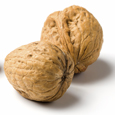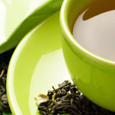Drinking Chocolate Milk May Help Your Workout
Study Shows Low-Fat Chocolate Milk May Boost Endurance, Build Muscle
July 1, 2011 -- Drinking low-fat chocolate milk after a
workout helps endurance, builds muscle, reduces fat, and seems to improve performance, according to new research.
The drink seems to have the right combination of carbohydrates and
protein, says researcher John L. Ivy, PhD, department chair of kinesiology and health education at the University of Texas at Austin.
"When recovering from exercise, two things you want to do is replenish sugar stores in the muscle and turn on protein synthesis and stop protein breakdown," Ivy tells WebMD.
"The combination of carbohydrate and protein [found in chocolate milk] work synergistically to do those two things," he tells WebMD.
The low-fat chocolate milk beat out two other drinks tested -- a no-calorie beverage and a carbohydrate drink with no protein.
Ivy's research is published in the
Journal of Strength and Conditioning Research and the
Journal ofNutrition and Metabolism. He also presented the findings at the American College of Sports Medicine Meeting in Denver in June.
The research was funded by the National Dairy Council and the National Fluid Milk Processor Promotion Board.
Chocolate Milk After Workouts
In one of two studies, Ivy had 10 well-trained cyclists exercise over two hours to the point of
fatigue. They then drank either the milk drink, the carb drink, or the no-calorie beverage right after the workout and then two hours later.
After four hours the cyclist did a 40K cycling time trial.
"The individuals, when they had received the chocolate milk, performed the time trials significantly faster," he says. They shaved six minutes off their time when they drank the chocolate milk compared to the carb drink.
The chocolate milk, he says, activates the proteins that block protein breakdown. This preserves protein and muscle, helping the recovery process.
In a second study, Ivy trained 32 untrained people, having them cycle 60 minutes a day, five days a week, for 4.5 weeks.
He gave one group the chocolate milk right after exercise and one hour later. He gave a second group the carb drink and a third the placebo no-calorie drink.
They looked at maximum oxygen uptake, a measure of aerobic endurance. ''The improvement in maximum oxygen consumption was twice as great [in the milk drinkers] than in the carb or placebo group."
"We also found individuals receiving the milk tended to have a greater increase in lean body mass and greater reduction in body fat."
Ivy says he was not trying to do a head-to-head comparison against sports drinks on the market. He says that sports drinks meant for use after workouts typically do contain protein.
The chocolate milk tested, he says, has a better carb-protein mix than white milk. The chocolate milk used has about 11.5 grams of carbohydrates per 100 milliliters, 3.5 grams of protein, and 2 grams of fat. The carbohydrate drink he tested has 15 grams of carbs, 2 grams of fat, and no protein.
Calories Count, Too
Jennifer Schmit, a spokeswoman for Gatorade, did not comment directly on the research. However, she says that a sports recovery drink made by the company does contain protein.
She notes that "it is important to take in 10-20g of protein within 30 minutes of exercise to start the muscle recovery process, as well as to replenish the carbohydrates and electrolytes lost during the workout."
The research findings make sense, says Barbara Lewin, RD, a sports nutritionist in Ft. Myers, Fla. She advises athletes on
nutrition to improve their performance. She reviewed the findings for WebMD but was not involved in the research.
"I have been using it for a long time," she says. It's no surprise, she says, that the chocolate milk beat out the no-calorie beverage and the carbohydrate drink without protein. The inclusion of some protein in a post-workout drink does improve muscle repair and growth, she says.
"This doesn't mean that
protein shakes are the answer because carbohydrate is extremely important in the recovery process and in restoring glycogen (the stored source of energy in the muscles). However, a food that contains a carbohydrate to protein ratio of 4:1 up to 5:1 does give more of an advantage than taking in 100% carbohydrate. This is what makes chocolate milk such an ideal choice. I usually recommend 1% or skim chocolate milk as the fat in the milk does not appear to provide any advantage.''
Lewin advises drinking the chocolate milk within 20 to 30 minutes. Ivy agrees.
How much to drink, she says, depends on how hard you've worked out and your
weight. She advises drinking about 8 to 16 ounces as a general guide. If you weigh 120 pounds and you've done a light workout, keep the calories around 120, she says. If it was a high-intensity workout, the calories can be double your weight, or about 240.
For the average exerciser, Ivy recommends taking in about 50% of the calories you burned during a workout.


 A mainstay of my dietary recommendations, walnuts are an excellent choice when it comes to healthy snacking. Walnuts are good sources of:
A mainstay of my dietary recommendations, walnuts are an excellent choice when it comes to healthy snacking. Walnuts are good sources of:








 Looking for a simple resolution to improve your overall health? Start drinking green tea. My
Looking for a simple resolution to improve your overall health? Start drinking green tea. My
 Witch hazel is a liquid distillation of the leaves, bark and twigs of a common shrub
Witch hazel is a liquid distillation of the leaves, bark and twigs of a common shrub





